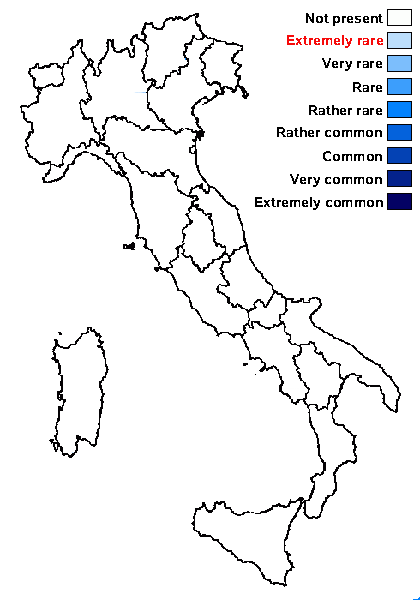Placidiopsis cinereoides Breuss
Öst. Z. Pilzk., 5: 84, 1996.
Synonyms:
Distribution:
Description: Thallus squamulose, of contiguous to slightly overlapping squamules, forming a compact rosette, the squamules 0.5-2 mm wide, 0.2-0.4 mm thick, finely lobulate to crenate-incised, flat to slightly convex, the peripheral ones often somewhat elongated and radially arranged; upper surface whitish to greenish grey-brown, epruinose; lower surface dark, attached by rhizohyphae. Upper cortex up to 20 μm thick, of roundish-subangular cells, overlain or not by an epinecral layer; medulla subparaplectenchymatous, white but becoming brownish in lower part, where it merges with a thin paraplectenchymatous lower cortex of more densely aggregated cells. Rhizohyphae brown, c. 4 μm thick. Perithecia subglobose, 0.2–0.4 mm across, immersed in the squamules, without involucrellum. Exciple colourless to brownish; periphyses present around the ostiole, measuring 25-35 x 3-4 μm, the terminal cell slightly swollen, interascal filaments absent; hymenial gel hemiamyloid. Asci 8-spored, narrowly clavate, thin-walled, apically slightly thickened, with a small ocular chamber, K/I-, 65-80 x 16-20 μm. Ascospores (0-)1 septate, slightly constricted at septum, hyaline, narrowly ellipsoid to fusiform, (20-)22–28(-30) x (6.5-)7–8(-8.5) μm, biseriately arranged in the asci. Photobiont chlorococcoid (Diplosphaera). Spot tests: cortex and medulla K-, C-, KC-, P-, UV-. Chemistry: without lichen substances. Note: on soil over siliceous substrata in rather shaded situations; described from Spain, to be looked for in Italy.
Growth form: Squamulose
Substrata: soil, terricolous mosses, and plant debris
Photobiont: green algae other than Trentepohlia
Reproductive strategy: mainly sexual

Predictive model
Growth form: Squamulose
Substrata: soil, terricolous mosses, and plant debris
Photobiont: green algae other than Trentepohlia
Reproductive strategy: mainly sexual

Predictive model
 INDEX FUNGORUM
INDEX FUNGORUM
 GBIF
GBIF

